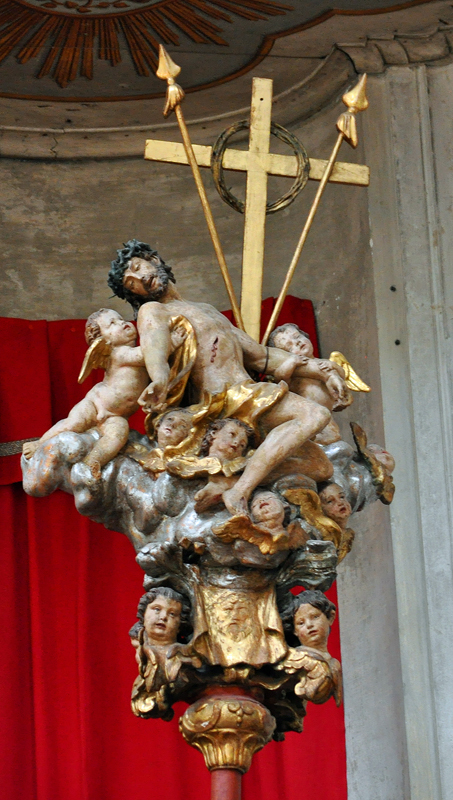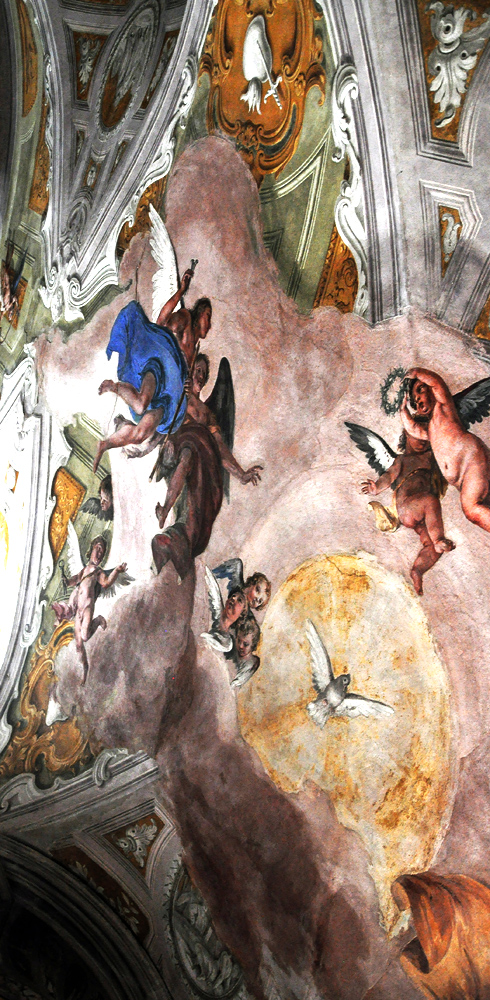These images serve two purposes important in the controversies of their time. First, they function theologically, emphasizing that Christ gave himself as a sacrifice to the Father for the remission of the sins of mankind. This is in tune with the Council of Trent's admonition that it is by images in a church that people are "instructed and confirmed in the articles of the faith" and "reminded of the benefits and gifts that Christ has bestowed on them."1 Secondly, like much counter-Reformation art, they have an affective function, leading the viewer to contemplate the pain and sorrow of Jesus' death and thus to appreciate the sublimity of that sacrifice.
The rarity of this type of image is probably due to some inconsistency with the belief that after his death on the Cross Christ went to Hell to reclaim the souls of those who had been faithful to God. Ephesians 4:9, for example, says he "descended…into the lower parts of the earth." The Apostles' Creed says Jesus "descended into Hell" after he was buried, and this "harrowing of Hell" is the subject of many medieval plays and images. That may be why the first picture on the right adds a scene at the bottom in which souls in Hell look up toward Christ, as if they were his next stop.
Prepared in 2016 by Richard Stracke, Emeritus Professor of English, Augusta University. Revised 2018-09-02.

Painting from Sicily, 17th century (See the description page)

Sculpture in the "Gesuati" in Venice (See the description page)

Ceiling of the baptistery of St. Raphael's, Venice (See the description page)
OTHER IMAGES
- 16th century: Veronese adapted "Death of Jesus" iconography in The Dead Christ and Saints.
- 1577: Girolamo Campagna's relief bearing the title "Man of Sorrows" is actually a simplified adaptation of the "Death of Jesus" type.
- Late 16th century: In this altarpiece the Father receives the body and only one putto brings instruments of the Passion.
- 18th century: Unterberger's painting in St. Stephen's, Vienna.
- Undated: a bronze plaque with elaborate "Death of Jesus" imagery.
- Undated: a wooden plaque in St. Mark's Basilica, Venice.
- Undated: A Death of Christ image, with the Holy Spirit hovering above the Father and Son.
ALSO SEE
NOTES
1 Council of Trent, Twenty-Fifth Session.